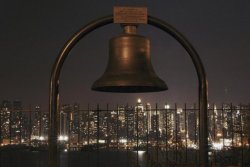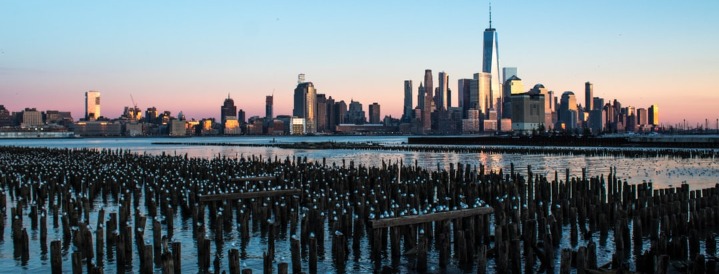2024 Jersey City Visitors Guide
Though Jersey City was “discovered” in 1606 by Dutch explorer Henry Hudson, the city was not incorporated until 1820. This home was once the home to the Lenni Lenape Native Americans. Hudson, like all other explorers of his time, had been seeking a route to East Asia, and like all the others failed, and so dropped anchor in Sandy Hook. The Dutch organized the United New Netherlands Company to manage this new territory and named it New Netherlands.
The first settlement was at Communipaw, an area adjacent to present-day Liberty State Park. Scattered communities of farmsteads characterized the Dutch settlements in what would become Jersey City. Jersey City was incorporated as The City of Jersey on January 20, 1820, and reincorporated under its present name in 1838. By 1870, the city had a population and economy so large that the neighboring towns of Hudson City, New Jersey, and Bergen, New Jersey voted to merge into the larger city. The residents of Greenville, independent since 1863, voted to merge into Jersey City in 1873, resulting in the current boundaries.
Jersey City was a dock and manufacturing town for much of the 19th and 20th centuries. Much like New York City, Jersey City has always been a landing pad for new immigrants to the United States. The largest employers during the World War II-era were the railroads, whose national networks dead-ended on the Hudson River in Jersey City.

The most significant railroad for Jersey City was the Pennsylvania Railroad Company whose terminal was in the downtown area until 1911, when the company built the first tunnel under the river to Penn Station, New York. Before that time, rail passengers transferred in Jersey City to ferries headed to Manhattan or to trolleys that fanned out through Hudson County.
The city developed a reputation for political corruption based on the city’s government during the 1920s, 30s, and 40s. By the 1970s, Jersey City saw an urban decline and many of its wealthy residents left for the suburbs, and the city became filled with poor, working-class citizens.
From 1950 to 1980, Jersey City lost 75,000 residents, and from 1975 to 1982, it lost 5,000 jobs or about 10 percent of its workforce. Jersey City is experiencing a renaissance now as many formerly abandoned buildings are being renovated and the light rail line, the only one of its kind in the city, extends through the city. As the waterfront continues to grow, Jersey City’s downtown neighborhoods are experiencing rapid growth as professionals working in Manhattan are beginning to move in.
The downtown area has a significant number of Victorian brownstones, and at prices that are far lower than one would find, for a similar home, in New York City. Also, many financial corporations including Goldman Sachs, Chase Manhattan Bank, Lehman Brothers, Merrill Lynch, and investment firm Charles Schwab have relocated from New York City to Jersey City or expanded their offices in Jersey City since the September 11, 2001 attacks.
Demographics
As of the 2000 census, there were 240,055 people living here. The median income of its households is $37,862, and the median income of its families is $41,639. Men had a median income of $35,119 versus $30,494 for women.
Communities
Jersey City boasts itself as a city of neighborhoods, each with a different aesthetic and architectural style. Downtown includes the Waterfront, Hamilton Park, Grove Street, Harsimus Cove and Van Vorst Park, Liberty State Park, Jersey City Heights, Western Slope, Journal Square, West Bergen, Lincoln Park, West Side, Bergen, Greenville, Lafayette, and Marion. Newport and Exchange Place is the redeveloped waterfront areas comprised mostly of residential towers, hotels, and office buildings. Newport is a planned mixed-use community, built on old rail yards, made up of residential rental towers, condominiums, office buildings, a marina, schools, restaurants, hotels, Newport Centre Mall, waterfront walkway, transportation facilities, and on-site parking for more than 15,000.
Newport and Exchange Place is the redeveloped waterfront areas comprised mostly of residential towers, hotels, and office buildings. Newport is a planned mixed-use community, built on old rail yards, made up of residential rental towers, condominiums, office buildings, a marina, schools, restaurants, hotels, Newport Centre Mall, waterfront walkway, transportation facilities, and on-site parking for more than 15,000.
Newport had a hand in the renaissance of Jersey City, though much of the downtown area had already started a steady climb back up before this.
Exchange Place, the first part of Jersey City to redevelop, was built on the grounds of the old Jersey City Penn Station, ferry and shipping terminals. It is now a burgeoning and busy business and financial district.
To the west are the three historic brownstone protected districts Hamilton Park, Van Vorst Park, and Harsimus Cove separated from the waterfront by older infrastructure, big-box development, and old warehouses still waiting to be redeveloped.
Paulus Hook is another neighborhood with a historically designated zone that borders Exchange Place and Liberty State Park on the waterfront and blends older brownstone streets with newer luxury developments. The area has become increasingly more active with development, the construction of the light rail and many streets lined with shops and restaurants with outdoor seating.
In Jersey City Heights’ Central Avenue is the primary commercial strip, with residential districts flanking the street on both sides. The Heights area is comprised mostly of two- and three-family houses and remains traditionally middle-class. Blocks away there are breathtaking views of the Manhattan skyline. Many stately Victorian and Edwardian homes contribute to the attractiveness of the Heights, particularly along Summit Avenue and Sherman Place. The Palisade, a condominium on Palisade Avenue at Fleet Street, is one of the few Art Deco buildings in the city.
Pershing Field is a park in the center of this district, offering green space, baseball fields, a swimming pool, and ice skating.
 Parts of this neighborhood are experiencing gentrification, largely due to the relatively affordable housing and the variety of transportation options.
Parts of this neighborhood are experiencing gentrification, largely due to the relatively affordable housing and the variety of transportation options.
Once the commercial heart of Jersey City, Journal Square has become rather derelict in recent years, but is in the process of rehabilitation, in part because of the efforts of the Journal Square Restoration Corporation and the Jersey City Economic Development Corporation.
The Stanley Theater and Loews Theatre on Kennedy Boulevard are among the city’s most noted landmarks and two of the best-preserved movie palaces in the Tri-State area. Directly across Kennedy Boulevard from the Loews is the Journal Square Transportation Center which houses the Journal Square railway station and the city’s largest bus terminal.
The West Bergen/Lincoln Park has neighborhoods dominated by single-family houses with some of the best-preserved Victorian and early 20th century mansions in the city. Lincoln Park, one of the largest parks in the area, is a county park that includes recreational facilities for tennis, track, athletic fields, golf range, biking, running and picnic areas.
Port Liberté used to be one of the many ports on the New Jersey side of the Hudson River. It was filled with industrial buildings until 1990 when developers began to transform the neighborhood into an upscale residential complex and have become Venice on the Hudson. The only golf course, Liberty National Golf Course, is 15 minutes and is scheduled to open here in the summer of 2006.
WALDO is a neighborhood in downtown Jersey City that has been transitioned from a purely industrial zone to include more residences. Half of the buildings in the eight-block neighborhood must go to artists. The area is referred to as the arts district. In addition to the attempts to bring in more housing and studios for artists, the area also is planning to make the area more pedestrian-friendly and bringing in art schools or museums.
As for taking in the sights, Jersey City has a lot to offer including the center of the city’s artistic life, Jersey City Museum in the Historic Downtown district. The museum has eight galleries, a collection of more than 20,000 works and a theater, gift shop and café, the results of an $11 million renovation completed at the end of 2000.
Creativity lives in the arts district, where artists live, work and exhibits the fruits of their artistic labors. Together with the local artist community, Jersey City is redeveloping these eight blocks of former warehouse buildings as an entertainment and tourism center, with galleries, theaters, restaurants, entertainment centers, and shops all within easy walking distance.
Also, the Statue of Liberty actually calls Jersey City home. A ferry ride from Liberty State Park quickly takes one to her feet on Ellis Island.
Additionally, there’s the Liberty Science Center, a high-tech science space undergoing a $104 million expansion and renovation project.
